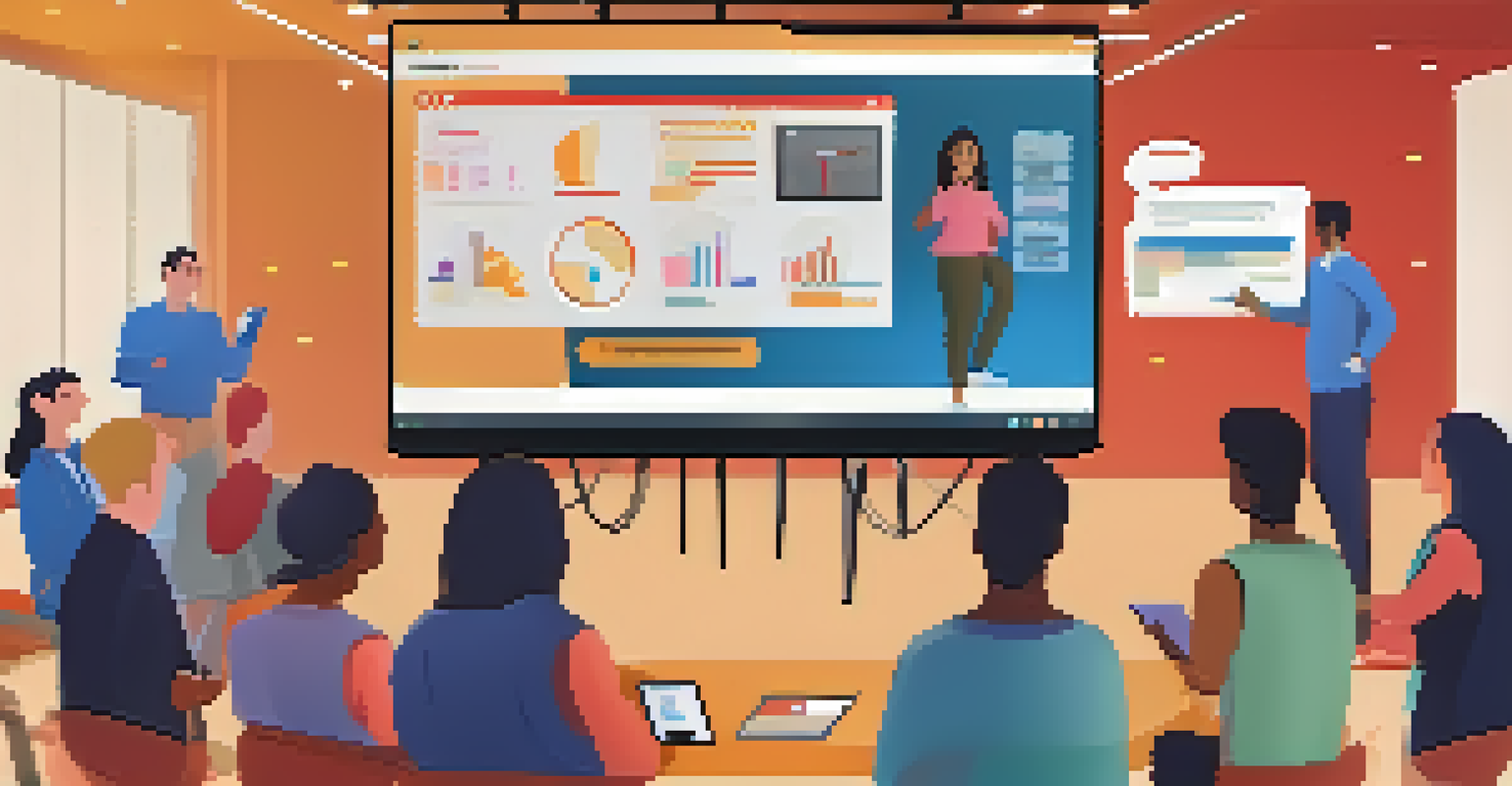The Importance of Community Building in Digital Learning

Understanding Community Building in Digital Learning
Community building in digital learning refers to creating connections among learners, educators, and resources. This process fosters a supportive environment where individuals can share ideas, experiences, and knowledge. It’s more than just interaction; it’s about cultivating relationships that enhance the learning experience.
Alone we can do so little; together we can do so much.
In a digital landscape where isolation can be common, community building acts as a bridge connecting individuals with shared goals. For instance, online forums, study groups, and social media platforms can serve as virtual meeting places. These spaces encourage collaboration and engagement, essential components of effective learning.
Ultimately, community building enriches the educational journey by promoting a sense of belonging. When learners feel connected to others, they are more likely to participate actively, leading to deeper understanding and retention of information.
The Benefits of a Strong Learning Community
A robust learning community offers numerous benefits that enhance the educational experience. First and foremost, it provides a support system where learners can seek help, share resources, and motivate each other. This camaraderie can significantly boost confidence and reduce anxiety in a digital learning environment.

Moreover, community interaction encourages diverse perspectives, allowing learners to engage with different viewpoints. For example, a diverse group can lead to richer discussions and innovative ideas that one might not encounter in a traditional classroom setting. This exchange of thoughts not only broadens understanding but also fosters critical thinking.
Community Enhances Learning Experience
Building a community fosters connections among learners, leading to deeper engagement and understanding.
Additionally, a strong community can lead to improved accountability. When learners know they are part of a group, they are more likely to stay committed to their goals and deadlines. This shared responsibility helps create a culture of success, where everyone celebrates achievements together.
Key Strategies for Building a Digital Learning Community
Creating an effective digital learning community requires intentional strategies. One key approach is to establish clear communication channels that facilitate interaction. Tools like discussion boards, chat rooms, and video conferencing can provide various ways for learners to connect and engage with one another.
The strength of the team is each individual member. The strength of each member is the team.
Another important strategy is to promote inclusivity by encouraging participation from all members. This can be achieved by setting ground rules that foster respect and open dialogue. For instance, creating icebreaker activities can help break down barriers and encourage shy learners to join the conversation.
Lastly, recognizing and celebrating contributions within the community can enhance engagement. Acknowledging achievements—big or small—helps individuals feel valued, reinforcing their connection to the group. This sense of recognition can motivate learners to contribute more actively.
Leveraging Technology for Community Engagement
Technology plays a pivotal role in facilitating community building in digital learning. Platforms like Learning Management Systems (LMS) can integrate forums, quizzes, and collaborative projects that engage learners effectively. These tools not only streamline communication but also create interactive spaces conducive to learning.
Social media is another powerful tool for community engagement. Groups on platforms like Facebook or LinkedIn allow learners to connect outside the formal learning environment, sharing insights, resources, and encouragement. This informal interaction can lead to stronger bonds and enhance the overall learning experience.
Diverse Perspectives Boost Creativity
A strong learning community encourages interaction among diverse members, enriching discussions and fostering critical thinking.
Moreover, technology enables asynchronous learning opportunities, allowing members to participate at their convenience. This flexibility accommodates different schedules and learning styles, ensuring that everyone can engage with the community in a way that suits them best.
Fostering Collaboration Through Community Activities
Collaboration is at the heart of community building, and organized activities can enhance this aspect significantly. Group projects, peer reviews, and brainstorming sessions encourage learners to work together and share their expertise. These collaborative efforts not only enhance learning outcomes but also build trust among community members.
Additionally, hosting virtual events like webinars or workshops can provide opportunities for learners to interact in real-time. These events can feature guest speakers or experts, adding value to the community and sparking engaging discussions. Such activities can help learners feel more connected and invested in their education.
Furthermore, creating opportunities for mentorship within the community can foster deeper relationships. Pairing experienced learners with newcomers encourages knowledge sharing and support, enhancing the learning journey for both parties.
Measuring Community Engagement and Success
To understand the effectiveness of community building efforts, measuring engagement and success is crucial. This can be done through surveys, feedback forms, and participation metrics that assess how actively members are involved. Gathering this data provides insights into what works and what needs improvement.
Analyzing engagement trends can help identify which activities resonate with learners. For instance, if discussion forums are highly active, it might indicate a need for more structured conversations. Conversely, low participation in certain areas may signal a need to reassess the approach or content.
Technology Supports Community Growth
Leveraging technology, such as LMS and social media, enhances engagement and facilitates flexible learning opportunities.
Moreover, celebrating milestones and recognizing community achievements can further enhance engagement. Acknowledging collective successes not only boosts morale but also reinforces the value of being part of the community, encouraging continued participation.
The Future of Community Building in Digital Learning
As digital learning continues to evolve, the importance of community building will only grow. With advancements in technology, new tools will emerge that facilitate deeper connections among learners. This ongoing evolution will enhance the overall learning experience, making it more interactive and engaging.
Moreover, as educational institutions increasingly adopt blended and online learning models, the demand for strong learning communities will rise. These communities will play a key role in supporting learners and addressing the challenges of remote education. Their ability to adapt to various formats will be crucial in meeting diverse learning needs.

Ultimately, investing in community building will lead to more enriching educational experiences. As learners continue to seek connections in their digital learning journeys, the focus on building supportive, engaging communities will pave the way for future success.